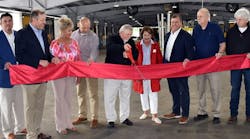Based on a detailed report claiming that more than half of U.S. highway fatalities are related to poor roadway conditions – costing the nation some $217 billion annually – a leading transportation safety economist is calling for major changes in the design parameters for America’s highway infrastructure.
“The cost of crashes involving deficient roadway conditions dwarf the costs of crashes involving alcohol, speeding, or failure to wear a safety belt,” said Ted Miller, Ph.D., with the Beltsville, MD-based Pacific Institute for Research & Evaluation (PIRE), in testimony before the U.S. Senate Environment and Public Works Committee this week.
“Focusing as much on improving road safety conditions as on reducing impaired driving would save thousands of lives and billions of dollars each year,” Miller added, pointing out that the upcoming highway and transit authorization bill provided an important opportunity to make additional investments to “improve the safety built into roads and bridges.”
In July 2009, Miller authored a study titled On a Crash Course: The Dangers and Health Costs of Deficient Roadways for the Transportation Construction Coalition (TCC) , a group founded in 1996 and co-chaired by the American Road and Transportation Builders Association and the Associated General Contractors of America (AGC).
In his research for the report, Miller found that crashes related to road deficiencies cost American businesses $22 billion and governments $12 billion, and result in $12 billion in medical spending annually.
Beyond assessing costs, the report outlined what were dubbed “practical” roadway improvements that could help reduce highway fatalities.
“Immediate solutions for problem spots include: using brighter and more durable pavement markings, adding rumble strips to shoulders, mounting more guardrails or safety barriers, and installing traffic signals and better signs with easier-to-read legends,” said Miller.
“More significant road improvements include replacing non-forgiving poles with breakaway poles, adding or widening shoulders, improving roadway alignment, replacing or widening narrow bridges, reducing pavement edges and abrupt drop-offs, and clearing more space on the roadside,” he added.
Brian Turmail, AGC senior director of public affairs, told FleetOwner that a key take-away from this report is to remember that highway safety rests on a “three-legged” stool – driver behavior, enforcement, and roadway conditions.
“We do a very good job in the U.S. focusing on those first two elements – but we need to remember there are three elements in the safety equation,” he said. “We can’t lose sight of the impact roadway conditions have on safety. Flattening out intersections or changing the shape of highway on- and off-ramps to improve line-of-sight for drivers is but one example of how roadway conditions can improve or hinder highway safety efforts.”
David Kelly, formerly Acting Administrator of the National Highway Traffic Safety Administration (NHTSA) and now president of the Partnership for Advancing Road Safety (PARS), added that driver behavior is proven to change drastically in the presence of a variety of different roadway-based technologies as well.
“Technological innovations in traffic management include automated enforcement at railroad crossings, stop signs, and speed management – including speed safety cameras,” he told FeetOwner.
He also said statewide deployment of speed safety cameras by the Arizona Dept. of Public Safety on its highways yielded 4,891 fewer collisions in the first nine months of the program when compared to the year before.
“There were also 18% fewer property damage collisions, 18.5% fewer injury collisions and more than 19% fewer fatal collisions,” Kelly added. “That was 24 fewer lives lost.”


